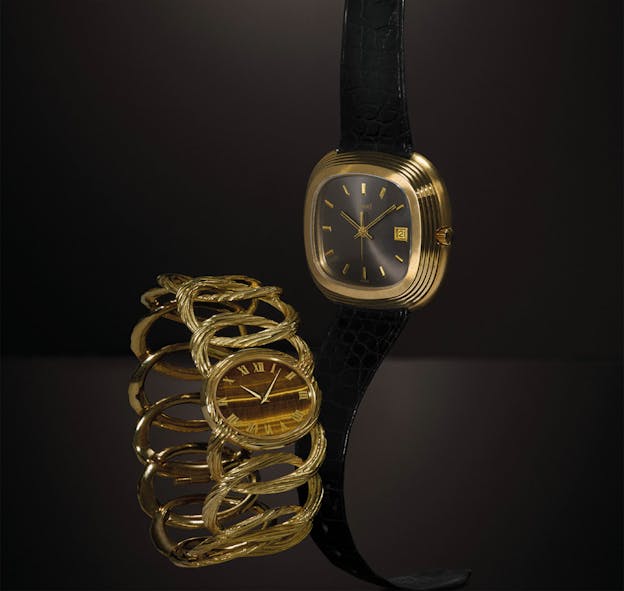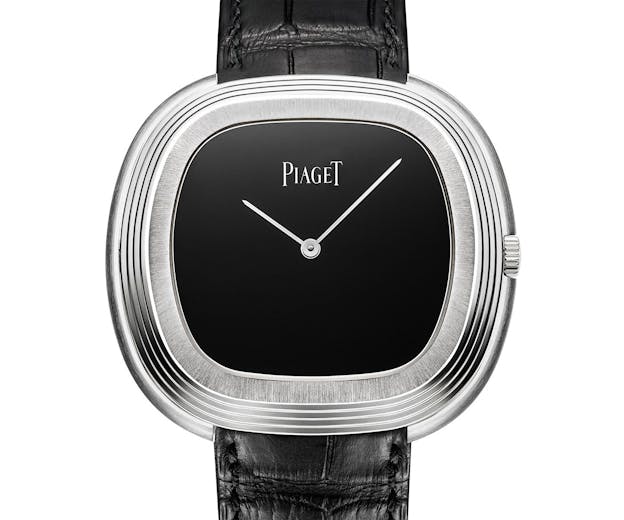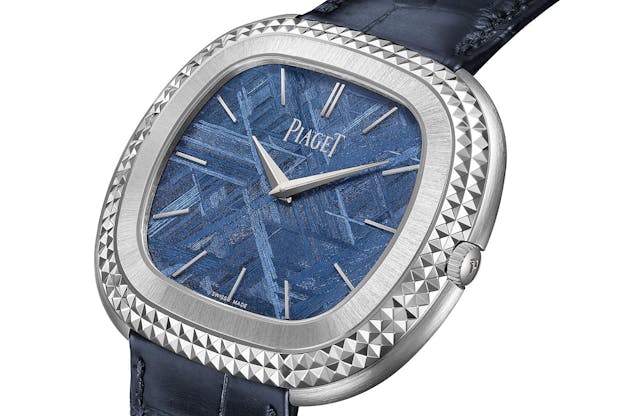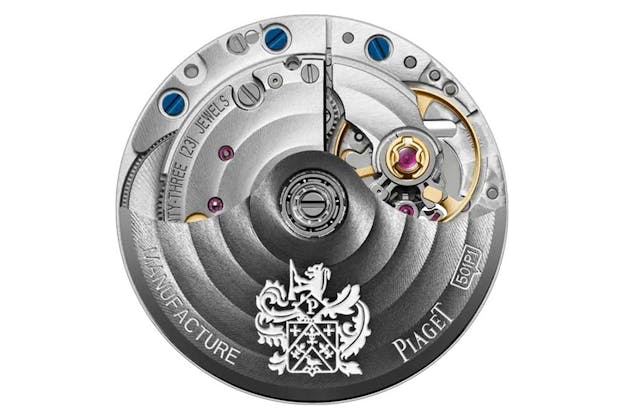Piaget Launches The Andy Warhol ‘Clous De Paris’
The new Clous de Paris is an official collaboration with The Andy Warhol Foundation For The Visual Arts.
When Andy Warhol died in 1987 at the age of 58, he left behind one of the most influential and complex legacies in the history of American art. His reputation was that of a agent provacateur and his work famously dwelt on celebrity culture, questions of uniqueness and originality, and an ironically deadpan presentation of aspects of popular culture as worthy subjects of fine art. There was an element of cynicism to his work, sure, but he was also a wildly original and inventive artist who did everything from make Campbell’s soup cans superstars, to producing experimental films including Empire, which consisted of a single eight hour shot of the Empire State Building. He managed The Velvet Underground and his studio, the Factory, was right at the intersection of his creation and exploration of pop culture and Pop Art.
He also left behind an almost incredibly large collection of watches. After his death 313 (!) watches were found at his townhouse and the next year, they were auctioned off at Sotheby’s over a ten day period; the auction was at the time the largest single owner watch auction in history. One of his most famous watches, and most famous comments about watches, was his Cartier Tank, about which he said, “I don’t wear a Tank to tell the time. In fact, I never wind it. I wear a Tank because it’s the watch to wear.”
Of course for a man who had a watch for almost every day of the year, you would expect other luxury brands to be well represented and Warhol had watches from Patek, Rolex, and many others. In particular, he had a close relationship with Piaget and with Yves Piaget. Warhol became a member of the Piaget Society which was a kind of nebulously defined conclave of the very rich, very powerful, very famous, or very all three who would meet at a 1980’s who’s who of what I think can justly be described as ritzy locales, including Monaco, St. Moritz, Capri, Palm Springs … you get the idea.

One of the seven Piaget watches in Warhol’s collection one of the best known is the Black Tie, which Warhol bought in 1973. The original Black Tie was if I may resort to slang, a chonker; Warhol’s was in yellow gold with an black dial and it was 45mm across. This is pretty surprising when you remember that this was a time when slim was definitely still in for watches and watchmaking and moreover, that Piaget had a well-earned and long established reputation for ultra thin watchmaking based partly on its own in-house ultra-thin calibers 9P and 12P. The reason for the ursine heft of the original was the movement.

The Black Tie housed the first Swiss production quartz movement, the Beta 21, which was a very big caliber – 30.9mm x 26.5mm, and the thinnest version of the Beta 21 was 6.2mm thick. For a contrarian like Warhol the size must have been a feature not a bug; the Black Tie was produced for a relatively short period of time, with production ceasing in 1977 by which time Piaget had developed its own ultra-thin quartz movements.
The Beta 21 is a fascinating movement but it was already a little less than state of the art at launch; power consumption was very high and instead of using stepper motors to move the hands, it used the vibrations of a tuning fork to drive a micro-gear system – basically, an Accutron drive system with a quartz timing package controlling it.

The new Clous de Paris is the latest version of the Black Tie which was relaunched by Piaget in 2014 in a white gold case with an onyx dial, and it has been in production ever since albeit in very small numbers and occasionally in unique pieces. (The 2014 model, the Black Tie Vintage Inspiration, was limited to 28 pieces). The Clous de Paris marks a new partnership with the Andy Warhol Foundation for the Visual Arts, which was established in 1987 and which supports, with cash grants, works of art that are ” … experimental, under-recognized or challenging in nature.”

The new model retains the 45mm case size of the original, and has a Clous de Paris pattern on the bezel – “Clous de Paris” is usually translated “nails of Paris” or more simply, hobnail. The movement is of course, quite different from the original; the new Warhol Clous de Paris uses Piaget’s caliber 501P1, which is a 20.8mm x 3.63mm automatic. The 2014 Black Tie had a smooth stepped bezel – no Clous de Paris, which are appearing for the first time (for a Black Tie timepiece) in the new Andy Warhol watch.

The new model has a blue dial made from iron-nickel meteorite, which shows the characteristic, geometric Widmanstätten patterns which form inside meteorites when the parent body from which they come cools; the process takes millions of years and cannot be artificially duplicated. The angular shape of the patterns is a great visual echo of the Clous de Paris engraving on the bezel. However, the meteorite dial will not be the only option – Piaget is offering 10 different customization options, including 10 different ornamental stone dials, a choice of either white or yellow gold cases, and either dauphine hands, or the baton hands of the original.

The watch itself as configured by Piaget, with a meteorite dial, is interesting for a number of reasons including the design, its history as a watch, and its history as part of one of the biggest watch collections of one of the most influential artists in the world; the customization options however, make the whole value proposition even more attractive. I would be hard pressed to pick one out of the many possibilities but I’m sure that for some well heeled Piaget completist collector out there, the answer to the question, which one? will simply be, all.

The Piaget Andy Warhol Clous de Paris: case, 45mm, 18k white gold with Clous de Paris decoration, recessed crown; 30M water resistance. Dial, blue meteorite with dauphine hands and applied indexes. Movement, caliber 501P1, automatic, 20.8mm x 3.63mm running in 23 jewels at 28,800 vph; 40 hour power reserve. Customization available with 10 stone dial options, yellow or white gold case, and choice of dauphine or baton hands. Price, $60,000; see more at Piaget.com. View our pre-owned Piaget collection.

